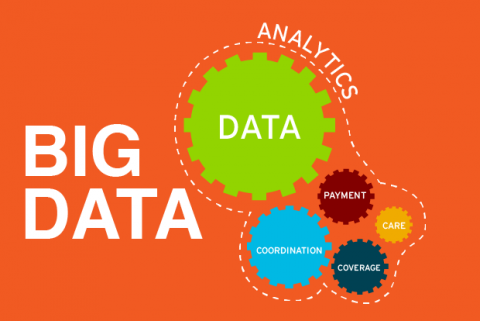At a recent Wall Street Journal CIO Network conference, attendees ranked analytics as a top strategic priority for 2015. This ranking highlighted two important aspects of analytics:
1. Broad awareness of value and strategic importance of analytics – This is a product of the tremendous successes that data-centric startups have achieved over the past decade and the matured value proposition from the technology service providers who specialize in analytics.
2. Recognition that much more is needed in terms of analytics capabilities – This in part is a product of the shifting landscape and increasing competitive pressure from technology-oriented startups that established industries and companies everywhere are experiencing, from advertising to hospitality, transportation, sports, education, agriculture, and other sectors.
Data is truly becoming the additional currency that companies use to innovate and compete.
Like many industries, the insurance industry is undergoing a significant technology-led disruption, and we are working hard to lead the wave of innovation by actively using data accumulated over decades of operation to make more strategic decisions, improve product offerings, ensure quality, and optimize processes.
Why data is so big now
During the ‘80s and ‘90s, a majority of traditional brick-and-mortar commercial and government organizations put in many ERP and CRM systems to improve record keeping, automate business processes, improve back-office operations, and help the front-office personnel. Since then, those information systems have been generating tremendous value to these organizations and the economy in general by improving productivity and efficiency.
Organizational goldmines
Over the last ten years or so, these organizations are starting to see that, beyond the productivity improvement, those systems actually produce a goldmine of readily available historical and current data about many important aspects of operation, such as clients’ purchasing history, employee activities, and operational metrics. The data has been accumulating in bits and pieces in a large variety of individual transactions, and organizations are starting to realize the tremendous value in deeply mining and interpreting that internal data for improving client and product intelligence, internal operations and processes, and talent acquisition and development.
User and sensor exhaust
Another large and important contributing factor is, obviously, the Internet itself and what many people call the “user exhaust” — the data generated when Internet users browse, click, log in, post, rate, like, friend, or buy. With proliferation of mobile devices one does not even need to be at a computer or even click anything to generate user exhaust. This type of data has been accumulating since the '90s, and the rate of accumulation is magnifying further as the “sensor exhaust” is rapidly multiplying across many types of devices, with hundreds of thousands of sensors measuring most anything that is measurable and of public or commercial interest, such as atmospheric and oceanographic metrics, satellite imagery, traffic conditions, etc.
The Internet of Things (IoT)
The early—but accelerating development—of the Internet of Things is bound to accelerate accumulation of big data even further with consumer wearables, household devices, and industrial equipment starting an online flood of data. The IoT has created an industry of its own of companies focused solely on warehousing and correlating that data and then selling it frequently in conjunction with added services or intelligence.
Optimizing around your analytics
At Crawford & Company, we have worked to put these ideas into practice by accumulating information on all the insurance claims we process, recording everything involved in processing a claim, including information about the loss and involved parties, for example, as well as the outcomes at the end. This gives us an unparalleled, valuable data set that spans geography, time, jurisdictions, and lines of business.
Micro level
How do we maximize the benefits of that data? We are mining the data for information and patterns, and we apply the findings at macro and micro levels. At a micro level, we build predictive models to improve outcomes for individual claims. For example, we are able to identify the cases with a high risk of litigation or severity early and engage an investigator or a nurse to manage the risk actively, which has proven to improve outcomes, e.g., help the injured party recover sooner and avoid unnecessary legal expense. At the same time, we are able to fast-track low-risk cases, closing them quicker and, in some cases, reducing work effort by 90 percent or more by automating such cases.
Macro level
At a macro level, we use analytics to optimize our operations, to forecast demand and supply, and for strategic planning. For example, transaction level data allows us to reconstruct actual process flows in a given situation (product, client, unit, etc.), and this in turn helps us find opportunities of systemic process level improvement where we can focus efforts at reducing bottlenecks, rework, and excessive handoffs while increasing collaboration and efficiency.
Intelligence
We also mine data to extract client and product intelligence not unlike what online retailers do. For example, billing history is useful for determining better ways of product bundling and cross-selling opportunities. This is done using techniques similar to market basket analysis that Amazon and other retailers use to generate product recommendations.
Forecasting and planning
Client demand and claims data are also combined with human resource data to find trends, forecast supply and demand, and identify the areas of expertise and geographical locations with resource shortages in the future. This helps in strategic planning for hiring and training by bringing evidence and rigor to decision making.
Tap into your data
Data plays an important role in every industry, and some new companies are working to capitalize on that. In agriculture, for example, seeds are planted and cultivated based on temperature, light, precipitation, humidity, etc. to maximize the yield. In healthcare, data is helping researchers come up with the best course of treatment for various diseases. Even the government data such as Medicare billing history (recently made public) is starting have a measurable effect on quality of medical service.
Many new companies and startups have data at the center of their business models. They either create value on their own or help their clients create the value by utilizing their data, and this is a very fast-growing industry. Whatever industry you are in, if you have not begun using data as a driver for transformation and innovation, now is the opportunity to challenge your own status quo before others do.




